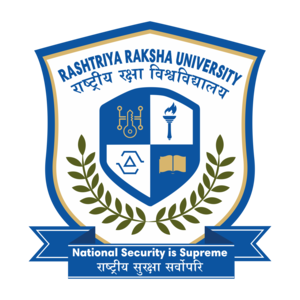
The Sentencing Policy of India
The Sentencing Policy of India
- Chendhan T, TNDALU, Chennai
If the defendant is convicted in a criminal prosecution, the defendant is bought before the hon\'ble court of law for the imposition of the penalty, the event that happens after the verdict is known as Sentencing. A sentence is a penalty imposed by the Court of law for criminal hearings if found guilty.
From the past , human civilization has been maintaining the social order in society by developing rules and regulations which are ideally followed by the people. just in case someone breaches the relevant rule, he/she within the ordinary course of justice mechanism was to be punished for an equivalent. Back then, punishment provisions were more stringent with its major specialize in deterrence effect by fixing the instance of more brutal punishment concerning their criminal nature. However, with human development and social change punishment became more rational and its focus tilted towards the reformative approach also.
India has also adopted the reformative approach with the first aim of rehabilitating the offender. It also can be evident from model prison reform 2016 released by the govt. Despite such an encouraging approach, a serious lacuna exists within the Indian legal code system which hampers not only the very purpose of the criminal justice system but also raises major concerns from a person\'s rights perspective also. a serious a part of criminal justice revolves around punishing someone for an act and that there exists the sentencing policy. In India, neither the legislature nor the judiciary has issued a structured sentencing guidelines till date. the necessity for well-thought guidelines has been realized on many occasions by different committees. Even, the judiciary has acknowledged that the absence of sentencing guidelines is leading to wide discretion which ultimately results in uncertainty in awarding sentences. The authors have emphasized the necessity for structured sentencing guidelines in India. For this, the Authors have taken a dichotomy approach wherein first part they explained why there\'s a requirement for structured guidelines during a country like India then within the second part they need to give strong reasons to implement such policy by drawing an analogy with the Coroners and Justice Act, 2009.
WHY SENTENCING POLICY?
In March 2003, the Malimath Committee (Committee on Reforms of Criminal Justice System) (Page 170) in its report submitted that a statutory guideline is required for the sentencing policy. The committee stated that under Indian penal laws, maximum or minimum punishment is prescribed for the offenses. However, the gap between theses statutory limits gives wide discretion to the judges which end in the uncertainty of sentencing, since some judges are lenient and a few are harsh in their approach. Thus, a statutory guideline is the dire need of the time.
In 2008, the Madhava Menon committee also reasserted the necessity for sentencing policy in India. In 2010, the then law minister stated that India is getting to establish a ‘uniform sentencing policy’ in line with USA and UK guidelines.
The proceedings of courts are often divided into two parts. First, during which the court decides the liability of the offender. Second, during which it decides about the sentence of the offender in light of provisions of Section 354, 361, 360, and 235 of the CrPC which makes mandatory for the judges to require under consideration the demographic information of the accused minutely. This leads to overburden the judiciary and cases takes longer than they ideally should. With the pending cases of approx. 3.3 cr, the over-burdened judiciary often compromises with the second stage of proceedings i.e. deciding the quantum of punishment for the accused during which the shortage of consistency in their approach is discernable.
INFLUENTIAL FACTOR
It is an admitted incontrovertible fact that judges’-do- get influenced by several factors during the proceedings of the cases. It also can be deducted from the 2003 Malimath committee (Page 171) recommendations wherein they advised for the establishment of a statutory committee to get down sentencing guidelines under the chairmanship of a former judge of Supreme Court or former judge of supreme court including members representing the prosecution, bar, police, scientist and ladies representative. They sought different members in order that sentencing guidelines can\'t be influenced the maximum amount as possible and may hold major stakeholder views also.
Though the influence factor can vary, the authors here have taken only the social background[i] factor of the offender for instance this. In the Shakti Mills rape case, five men including two juveniles raped a woman. The three accused were granted the execution under the newly adopted section 376E of IPC. Here the court took a strict approach towards the accused and allowed the execution on the bottom that earlier also they raped a woman that life was given to them, this was albeit the lads had not been convicted within the previous rape case at the time the crime had occurred. Unsurprisingly, all the convicts hailed from lower socio-economic backgrounds and had a history of delinquency. While, in the 2006 Khairlanji massacre, where a mob stripped the mother and daughter naked within the market and sexually assaulted them, even inserted objects in their genitalia then ghastly murdered them. This crime was no less heinous than Shakti mills case because it wasn\'t only against the victim but was against the entire community. However, here accused were granted only life-sentence. Again, the convicts belonged from the upper class while the victim was from a lower social background. within the Bhanwari Devi case which resulted in the formation of Vishakha guidelines, the victim was a caseworker. She was gang-raped by five men belonging from higher class while attempting to stop a toddler marriage during the course of her work. during this case, even the right verdict wasn’t concluded as just one hearing has been haunted by the court in appeal after the acquittal of the accused from the court. Unsurprisingly, here also the victim hailed from the lower socio-economic background. additionally, to the present state, the initiative is additionally an efficient factor. for instance, in unnerving Kathua rape case, wherein an 8 years old girl was raped on a periodical basis during a time after she was abducted. The heinousness of crime was no less heinous than Nirbhaya Crime, wherein the accused belonged from the lower social background and was hanged to death because the state initiative for his or her death sentencing was huge with mass protests by the people all across the state. However, here the state initiative for death sentence wasn’t in parallel to Nirbhaya or Shakti mill case and consequently, the court allowed just for life.
PROSTRATION OF PRIMARY PURPOSE
According to Lombroso’s theory, “nobody is born as a criminal and it\'s the society that creates an individual criminal” and on this idea, punishment rational was evolved. Though, punishment in itself is institutionalized violence executed by the state. However, it\'s justified by its deterrence effects on society and therefore the possibility of rehabilitation of the offender. Thus, punishment requires more vigilant look over by the judges as excessive punishment defeats the thing of law in ensuring the rehabilitation of the offender while unconscionably lenient sentencing would end in the miscarriage of justice and can negate the deterrence effect. Therefore, to realize the first purpose of law these two aspects are required to implement 1. The immediacy of punishment 2. Consistency of punishment.
The continuous appeal from the lower to higher court leads to the disparity in sentencing which frequently results in the shortage of consistency while awarding it. for instance in Mohd. Chaman v. State (N.C.T. of Delhi) the accused brutally raped and killed a one-year-old girl. The court found this under the category of rarest of rare cases and sentenced him to the execution which was later overturned by the supreme court on the bottom that the accused didn’t pose any threat to the society. In Nar Singh Prasad Singh v. Raj Kumar, the court in appeal reduced the sentence of the accused without giving any reasons and without considering the crime which was prevalent within the society for unjustified demand of dowry. We have already got discussed how despite having an equivalent fact and circumstances, the court has given different decisions as far as the quantum of punishment cares. The Supreme Court has acknowledged that the court often comes across an outsized number of cases that show anomalies regarding the sentencing policy. it\'s also reported 90% of the trial courts are overturned by the upper courts. Thus, it leads to the absence of a uniform approach while sentencing.
This lack of immediacy and consistency of punishment emboldens the offender because it gives them an idea of escape which could cause an offence within the future also .
References :-
1)https://blog.ipleaders.in/criminal-justice-sentencing-policy-india/
2)https://criminallawstudiesnluj.wordpress.com/2020/05/08/the-sentencing-policy-of-india-a-critical-analysis-and-suggestions-part-i/
3)https://shodhganga.inflibnet.ac.in/bitstream/10603/201779/9/09_chapter%202.pdf.












